Backpacking to Togo and Benin can be a great experience for travelers who find pleasure in visiting lesser known places. Togo and Benin are two west African countries located below the Sahara line in the Gulf of Guinea.
Backpacking in Togo and Benin can be a pleasantly surprising and rewarding experience. Not to forget, a strange one. After all, these are the regions of active voodooism – a religion not many are familiar with. The things you see here cannot be unseen. They will leave you wondering about the uncanniness of our vivid world.
Togo and Benin are literally sandwiched in between Ghana and Nigeria, two English-speaking giants that dwarf them in size, population and development. Yet, what Togo and Benin might lack in those aspects, is made up for by their serenity, hospitality, captivating Voodoo cultures and hidden gems waiting to be discovered in every corner.

Togo and Benin are two small nations that have a close relationship to one another, as they share many cultural and historical ties. There are substantial overlaps in ethnic, linguistic and religious make-ups. Not to forget, they’re both heavily immersed in Voodooism.
Backpacking to Togo and Benin: Travel Overview
In case you’re left wondering why this blog concerns itself with 2 countries, it’s because most travelers visit both together. They’re so closely located, that it would be a huge mistake to leave out either. What follows is a brief overview that will make planning your trip to this part of the world uncomplicated.
| Location
West Africa (Gulf of Guinea) |
| Language
Predominantly French; indigenous languages like Ewe and Kabiye |
| Currency
The currency used in both Togo and Benin, is the CFA Franc (pronounced as ceefa). Conversion rates in terms of the CFA and the American dollar (USD) back when I traveled to these African countries was as follows: 1 USD = 590 CFA |
| Climate
Tropical, humid |
| Best time to visit
November to February |
| Safety
Moderately safe |
| Highlight of visiting the countries
The voodoo practices |
| Nearby countries to visit
Ghana, Nigeria, Burkina Faso |
Fortunately, Togo and Benin aren’t too expensive to travel to. To find out how much you need to shell out for a backpacking trip here, read on. Also read on for hacks, tips, and ways to make an already cheap trip even cheaper.
Is there anything like too cheap?
Know What to Pay: Togo and Benin
Just so you get an idea of prevalent prices in Togo and Benin, I’ll lay out how much basic necessities cost. Prices might differ a little, but are generally around the same price point in both countries:
Drinking Water
As you might know, drinking from the tap should be avoided in Togo and Benin. Buying packaged drinking water from the supermarket would roughly cost 500 CFA (0.8 USD) for 1.5 liters.
Food
This largely depends on where you eat. A decent meal at an inexpensive restaurant would come for 2,000 CFA (3.3 USD). On the other hand, if you eat on the street, you could have a delicious meal for 1,000 CFA (1.7 USD).
Accommodation
You can stay at a basic hotel, guesthouse or BnB for roughly 7,000 CFA (12 USD) a night.
Commute
Again, it depends on how you commute. While you’d be paying as much as 2,000-3,000 CFA (3.3-5 USD) for an hour in a taxi, bush taxis will cost you as little as 500-600 CFA (0.8-1 USD) for 20 kilometers.
Fuel
This would come handy to those willing to rent out a car during their time in Togo and Benin. A liter of gasoline should set you back around 550-600 CFA (0.9-1 USD).
Backpacking West Africa: Hacks for Saving Some Bucks
Keep in mind these top tips if you want your Togo and Benin stint to be as cheap as possible:
| Negotiate beforehand – The rule of thumb to saving money while backpacking to Togo and Benin is to ask about the price before you purchase any product or service. |
| Bargain – The second rule is to negotiate, as everything is about bargaining here. Usually, you will be able to cut the original offer by at least 20% on any product or service other than cheap and basic ones such as a bottle of water. |
| Shared cabs – While backpacking in Togo and Benin, you will mainly be travelling in taxis – cheap and available everywhere. However, it is the norm in Togo and Benin for a normal 4-passenger taxi to hold 6 passengers instead, with two in the front seat and four in the back seats. Although it’s uncomfortable and difficult to come to terms with at the start, try getting used to it. |
| Ditch luxury – By default, there are very few luxury offerings when it comes to accommodation in Togo and Benin. There are obviously, a few exceptions, but it would be best if you stay away from those. These are cheap countries and take advantage of the same. Stick to guesthouses, small hotels, camping grounds, or Couchsurfing. |
For more tips and for further elaboration on the above-mentioned points, keep reading. You’ll see that a good trip doesn’t always require spending a fortune.
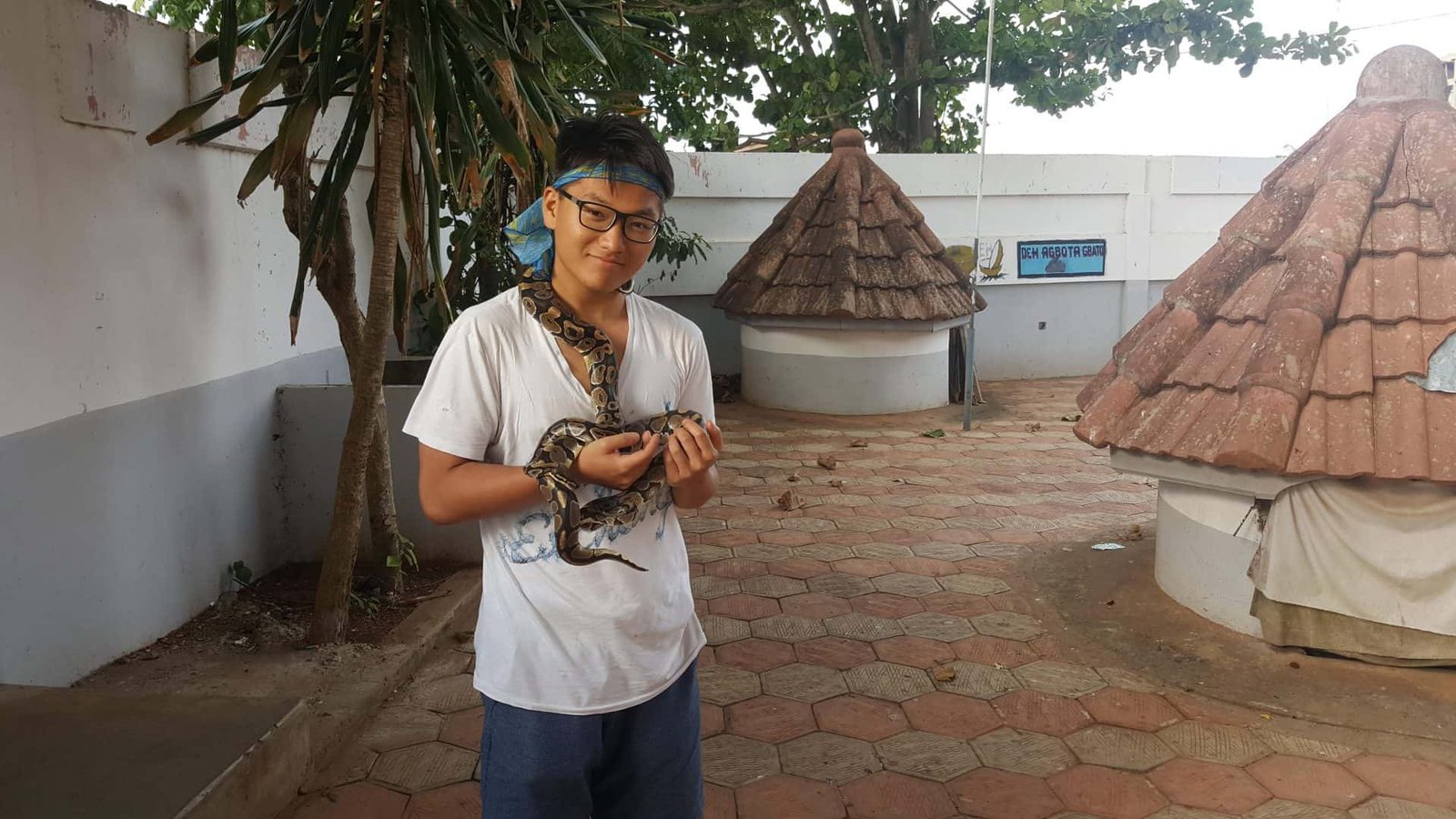
This is me holding a python at the Python Temple in Benin. These West African countries challenge your fears at many points. You’ll feel a sudden adrenaline rush every now and then. The best way to enjoy your trip is to give in to everything that comes your way.
Backpacking to Togo and Benin: Getting Around Cheap
Good news for travelers, both Togo and Benin offer a wide array of options for getting around the country. Whether you’re a luxury traveler or a budget traveler, Togo and Benin won’t disappoint. Some of the popular ways of traveling within the countries are:
Bush Taxis – Cheap, Crazy, Local
Essentially shared taxis, bush taxis are a popular mode of commuting in West Africa. Why is it called a bush taxi, you might be wondering? Actually, it’s funny – these rough and tough, depreciated taxis often make their way through bushes, dirt roads, and bumpy potholes.
Basically, they go anywhere and everywhere – from village to village, city to city, and country to country even.
Bush taxis are so cheap, that I almost wanted to pay the driver a little more. Expect to pay about 500-600 CFA (0.8-1 USD) for about 20 kilometers. However, know what to expect with such a small fare. Bush taxis are anything but comfortable.
| Be prepared to have more people crammed into the rusty piece of something that resembles a car, than its confines allow. Screws might be loose, seats might be torn apart, you might have to hang on for your life. Locals might find a comfortable spot on the roof, or even on a skateboard attached to the car by a string. |
Setback: Your journey might slowdown because bush taxis often a stop a lot – to pick up passengers on the way, or to make a few diversions.
As to getting on to a bush taxi, you have to visit la gare (the station in French) – generally a dirty, abandoned parking lot where taxis depart from. To ensure you’re going to the right one, ask around.
As far as safety is concerned, bush taxis are certainly responsible for a number of accidents in the past. However, it’s the way to experience the cheap, raw, and real life of West Africa.
Motorbike Taxis
Moto taxis are commonly found in most Togolese and Beninese towns and cities. This is the best way to travel short distances, because it could get difficult to find a car taxi in situations like these. Although fares depend on the city you’re in, and the distance to be covered, you’d roughly be charged 200-300 CFA (0.3-0.5 USD) for short distances.
Tip: Moto taxi drivers often drive rash. Do not hop on to one if you are not offered a helmet – as might often be the case. Nothing comes above your safety.
Private Taxis
Although this isn’t the most popular way of getting around Togo and Benin, it is useful to those looking for some comfort, or even those travelling in groups. Generally, this would cost you about 2000-3000 CFA (3.3-5 USD) for an hour.
Buses
You could opt to travel by bus for longer distances – they’re generally air conditioned, comfortable, and safer than other modes of transport. While there are many bus operators, Rakieta is said to be a reliable one in Togo. On the other hand, while in Benin, you could make bookings with ATT or Confort Lines.
Tip: Try to make bookings in advance. Furthermore, online bookings are out of the question.
Self-Drive Cars
For those who love to drive and enjoy independence while on-the-go, cars can be rented out on a per day basis. This will set you back roughly 20,000-30,000 CFA (33-50 USD) per day (exclusive of fuel). An International driving permit is mandatory.
Tip: Make sure you fuel up before driving into rural areas.
Togo and Benin: All About Cheap Accommodation
Once again, we’re talking West Africa. So, it wouldn’t be fair to expect luxury accommodation. That being said, most rooms, camps and guesthouses in Togo and Benin are clean, affordable, and make for great options for boarding and lodging.
| Togo
You’d definitely want to spend a night in Lome while in Togo. Here, you will find a wider variety of options for stay, including upmarket establishments. Browsing through Airbnb would also be a great idea, for there, you could find accommodation for as little as 7,000 CFA (12 USD) per person. Other than Lome, you must definitely spend a night at Pineapple Village Lodge in Davedi as mentioned before. |
| Benin
No matter where you decide to spend a night, guesthouses and small hotels would be the most common accommodation type in Benin. |
Unfortunately, due to a lack of tourist influx in both countries, the hostel culture hasn’t developed much. In addition to the aforementioned options, do give camping a shot. A number of camping grounds mark tourist locations in both Togo and Benin. This is not only cheap but also a minimalistic way of traveling.
Couchsurfing for Cheaper Travels
Fortunately, Couchsurfing is an option in Togo and Benin. For those who are unaware, let me explain what this ingenious concept is. In simple words, this involves locals opening up their homes – typically with a spare room, or a spare bed, to travelers from around the world.
This is not just a great way of traveling cheap, but also a great opportunity to make friends all over the world, and be shown around by locals.

Couchsurfing in Togo and Benin is a great idea because the people are just so warm, welcoming, and hospitable. At no point of my trip, did I feel like I was in a foreign land. The kids especially, are extremely adorable. I could not get enough of playing with them!
Tip: Although hosts generally do not charge you a fee (that’s the whole point of couchsurfing), be nice and offer to pay for groceries, electricity, or other necessities you’d be making use of.
Backpacking Africa: Affordable Eating in Togo and Benin
Just as most things, eating out in Togo and Benin doesn’t cost a bomb. The best part is that while fish and meat is used in some of their meals, it isn’t quite a dominating ingredient. Some of the popular dishes here are:
- Fried yam and potatoes – generally served with a hot tomato sauce
- Massa – made with flour, water, sugar, and rice, massa is a sort of local pancake
- Aloko – fried plantain (banana)
- Wagasi – cheese fried in hot spices
- Fufu – boiled yam served with a sauce, a stew, or some soup
Most of these dishes when eaten on the streets is really cheap. You could buy meals for as less as 1,200-1,800 CFA (2-3 USD).
Tip: Don’t be surprised if you see a large percentage of people eating with their hands.
What Really is Voodooism?
The word voodoo often leads people to paint pictures of spooky dolls, sorcerers, black magic, and all things creepy in their heads. However, voodooism is far from all the stereotypes associated to it. Originating in Haiti, Voodooism is a monotheistic (worship of just one God) religion, and a mix of both African and Catholic beliefs.
Because this religion is deeply rooted in slavery (it was first practiced by slaves of African descent in America and Caribbean), sadly, it often has negative connotations.
| Originally known as vodou in Togo and Benin, a large percentage of the population here still practices voodooism. Although the religion does have a dark side to it, it doesn’t end there. Of dances, celebrations, animal sacrifice, and pious ceremonies, voodooism is a world worth understanding and exploring. |
It is to do with two worlds – the visible (the one we live in), and the invisible (what death leads you to). Doing good to others is a central tenet of the religion, and was a mental boost for slaves who were made to endure inhuman conditions.
Togo and Benin are great countries to visit if you want to experience and understand the religion better. Following is a list of places in Togo and Benin that will bring you closer to the voodoo practices, along with other destinations you must definitely visit.
Backpacking Togo: Here’s What’s in Store For You
Hill top villages, palm-lined beaches, muddy backwaters, misty mountains, fascinating people – these are the things that essentially define Togo.
There is so much in Togo that should be explored. Based on my experience of backpacking to Togo and Benin, the following two places should certainly be visited while you’re in this region.
Lomé
Lomé is the capital city of Togo. It is located on the southwestern-most point of the country, making it highly accessible.
Perhaps the most unique attraction of Lomé is the fetish market. It’s open from 8:30am to 6pm daily.
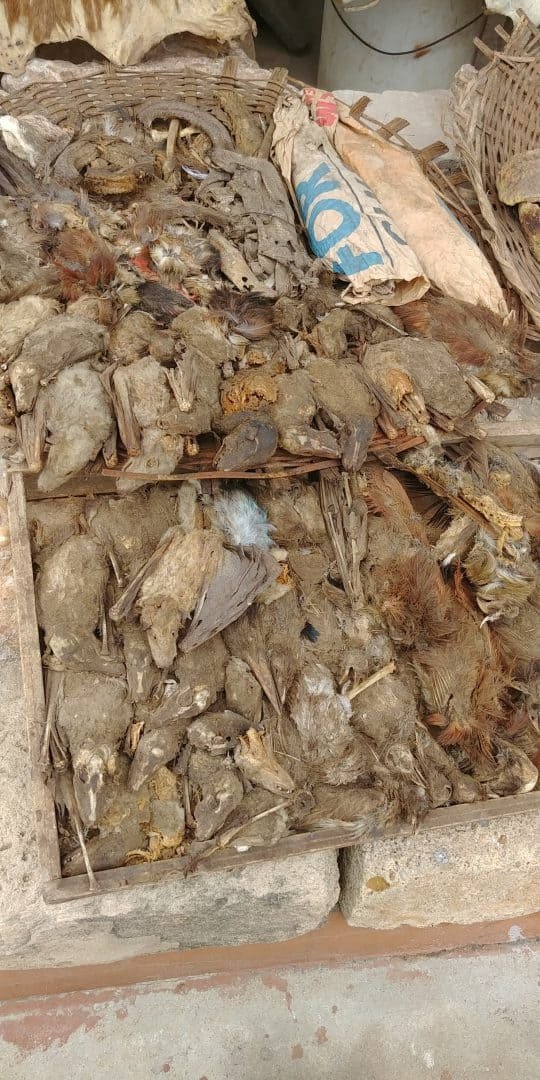
A fetish market is not something you’ll casually stumble upon in any part of the world. It is essentially a market displaying and selling parts of dead animals. It is certainly not a place to visit for those who cannot deal with the smell or visuals of dead carcasses.
Chances are, however, that you wouldn’t know if that’s something you can deal with. So, my advice would be to simply go and see for yourself.
The Akodessawa Festish Market is said to be the largest voodoo market in the world. Here, you will find all sorts of fetishes made from different animals. It is not merely a travel attraction, as Voodoo priests from all over the region make their way here. They can be seen shopping for fetishes that they might require for a ceremony.
Things that come free
|
Things you must pay for
|
If you fancy voodooism or simply a deeper understanding of it, you could also meet with a fetish priest. He will take you through the market, traditional beliefs, and some special fetishes.
Other things to see in Lome
Near the city center, you will find the Sacred Heart Cathedral enclosed by the vibrant and colourful fabric market. The fabric market is meaningful because in West African tradition, each fabric has a name and a special meaning.
Wearing clothes made from a specific fabric equates expressing the message carried by the fabric – similar to using a metaphor. Women in West Africa, who historically have been oppressed, get to silently protest and voice their opinions this way.
Davedi
Davedi is a small village outside of Tsévié, a town, 50 km north of Lomé. A peaceful and secluded garden, this is where you will get the ultimate opportunity to experience the culture of the Ewe people (the largest ethnic group in Togo) in its most authentic way.
| Getting there from Lome
You can reach there with a combination of taxi and moto-taxi, which should cost no more than 4,000 CFA (7 USD) per person in total. |
The area is known for its vast pineapple fields and palm oil plantations, and its community experiences curated specially for travellers. A great place to stay for an authentic experience while in Davedi is The Pineapple Lodge.
The Pineapple Village Lodge
The Pineapple Village Lodge is a small-scale eco-tourism initiative founded by Isaac, a local of Davedi. Additional to his native tongue Ewe, Isaac is fluent in both French and English, which makes communication easy.
All these years, he has been hosting travelers from all over the world at his eco lodge. His goal is exposing them to traditional Togolese lifestyle within the nearby community and farmland.

There’s no lack of community experiences at the Pineapple Village Lodge. You can pay a visit to the elders of the village, see the process of turning palm nuts into palm oil and gin, or learn about the wooden twin dolls – a century-old tradition kept by women here.
Some other activities worth indulging in, at the Pineapple Village Lodge are as follows:
| Cultural workshop: Learn a voodoo dance, be part of some special rituals performed by a fetish priest, and play a typical Ewe game. (10,000 CFA/16.9 USD for a group of 1-3 persons) |
| Story telling: Enjoy some traditional stories recited by the elderly or by children even, followed by jubilant dancing. (1,500 CFA/ 2.5 USD per person) |
| Twin dolls ceremony: Watch the process of caring for wooden twin dolls – they’re bathed, dressed up, and even served food and drinks. (15,000 CFA/25 USD for a group of 1-4 persons) |
At the lodge itself, Isaac’s wife makes a variety of local dishes that will satisfy your taste buds. These include Akple (a ball made of cornflour and cassava dough) and Okro, the stew that comes with it.
Note: Expect anything but luxury at the pineapple village lodge. Generally, you won’t even find electricity here. If you’re wanting to stay the night, come prepared accordingly.
Backpacking Benin: Places to Visit
As both Togo and Benin are shaped long and thin, with a combined coastline of less than 200 km, you can take a taxi from Lomé to the Beninese border for less than 2,500 CFA (4 USD) per person and arrive within an hour.
If you have all the documents with you, most importantly your passport and yellow fever vaccination card, you should be able to cross the border within half an hour.
Based on my experience of backpacking to Togo and Benin, the following four places should certainly be visited while you’re in this region.
Possotomé
Possotomé is one of the many villages around Lake Ahémè. This is a great place to start exploring nearby villages in this area, that are widely known for their vibrant Voodoo culture.
A guided walk alongside the serene lake, the villages and the sacred forest will tell you a lot about how locals worship their traditional gods. Furthermore, you shall get to know more about the role of Voodooism in the daily life of ordinary people.
| Getting there
In a taxi, you can reach here within an hour, and for less than 3,000 CFA (5 USD) from the border. |
| Highlight
The highlight of the Voodoo religion is definitely the Zangbeto dance, where the people of a village sing and dance alongside the Zangbeto Spirits. The Zangbetos appear as stacks of hay, and are referred to as the Night Guardians that protect the community against bad spirits and malicious people. |
While the traditions might differ slightly within each village, villages across this region regularly host Zangbeto ceremonies themselves (especially in the light of unfortunate events). So, if you are lucky, you might stumble upon one that is going on and attend for free.
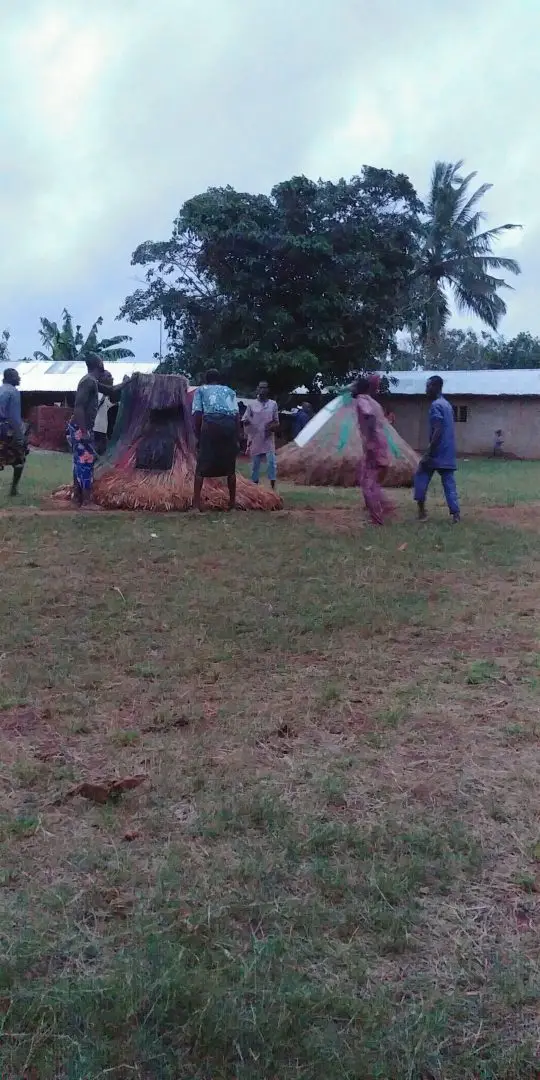
According to folk tales, there are no human beings under a Zangbeto costume when it dances. Instead, spiritual deities (a supernatural being) that inhabit the Zangbetos are responsible for all its movements. I must say, it’s both eerie and mind-boggling at the same time.
However, the villagers are also more than happy to put on a show for foreigners. If you ask around in the local area, you would easily find a way to request a village to organize one for you to experience. However, this is an expensive affair and will set you back around 50,000 CFA (87 USD).
Ouidah
Ouidah is a versatile city with all kinds of interesting sights to see. Primarily, it is known as the “Voodoo capital of Benin”, since the most important king of Voodoo is based here.
Here, you must visit the Python Temple, where you will find a house full of harmless python snakes, which are sacred and used in Voodoo ceremonies.
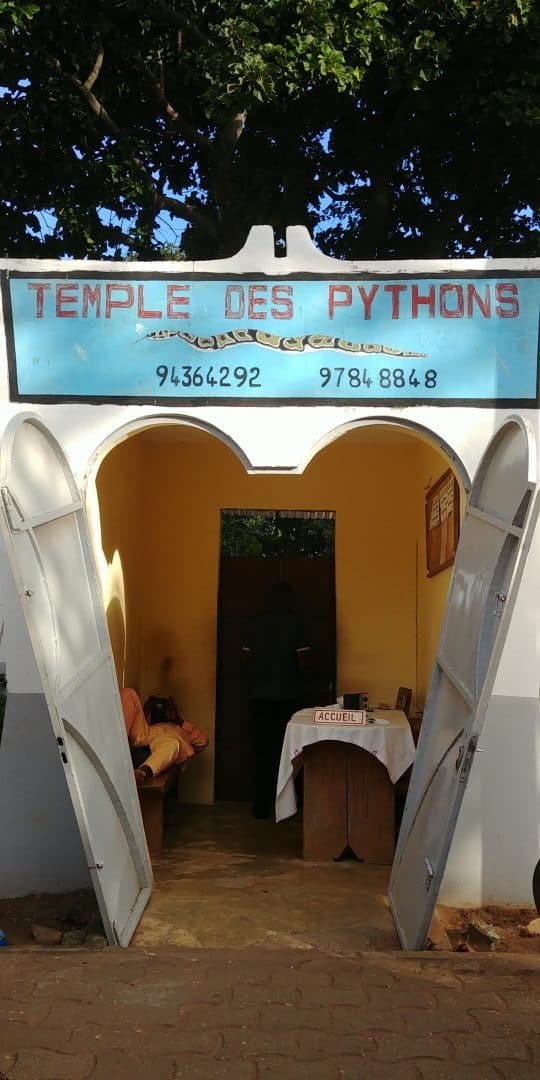
Dozens of snake are preserved and worshiped in the insides of the Python Temple. Though it’s a scary sight, try to understand the historic and symbolic importance of all that you see. Remember that the snakes are absolutely harmless. You’re safe. Be fearless!
Entrance fee is 1,000 CFA (1.69 USD), and you would be charged separately if you wish to click photographs inside the temple. Furthermore, you’d most certainly be charged an additional fee if you want to pose with a python in your hands.
Another highlight is the sacred forest of Kpassé, where you can hear great stories of the trees and inspect animist sculptures and carvings representing various deities.
Taking a Step Back from the Voodoo Religion
You can stop by the Basilica of Immaculate Conception, a Roman Catholic basilica located in central Ouidah. The neo-Gothic structure was erected in early 20th century by Christian missionaries and was visited by Pope Benedict XVI in 2011.
Furthermore, you can catch scintillating history and contemporary art exhibitions showcasing the African diaspora at the Maison de Brasil (or Casa do Brazil), which was built by returning slaves from Brazil.
Lastly and perhaps most importantly, Ouidah is known for its historic role during the trans-Atlantic slave trade from the 17th to 19th century.
A place worth visiting is the Route des Enclaves, a scenic 3.5 km long beach side trail with a dark history. It was the final stretch of the route that slaves had to walk, before boarding the ships that would eventually take them to the Americas.
At the end of the route, you will find many memorials, amongst which is the iconic ‘Door of No Return.’
Djegba Beach
Quite ironically, the vicinity of the thought-provoking Slave Route is a paradise known as the Djegba beach, where you will find miles of stunning and uncorrupted beaches.
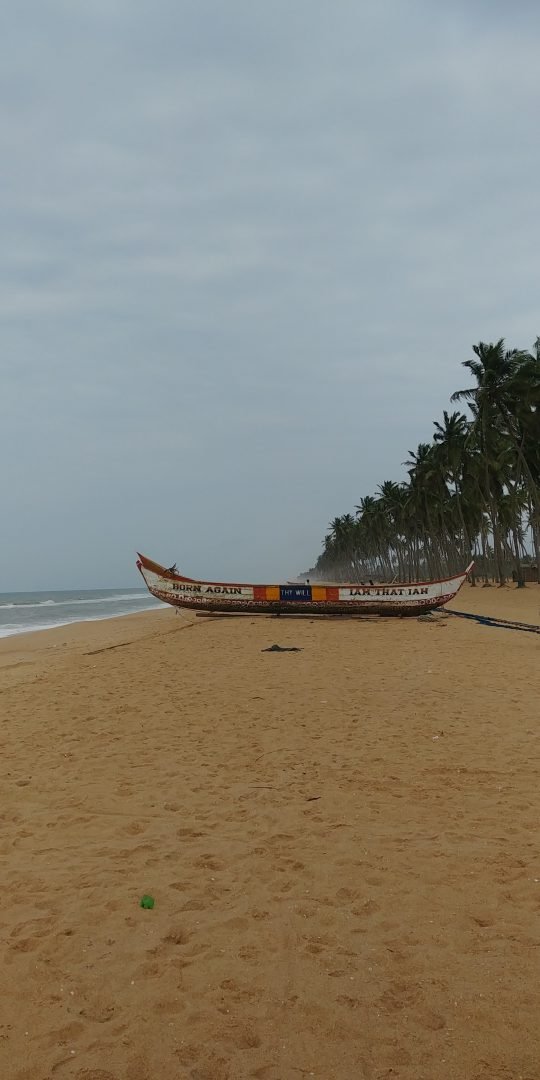
Here, take a walk along the shore, stare into the vastness of the Atlantic Ocean, or look the other way at a horizon of palm trees. If you are looking for a place to find inner peace and tranquility, Djegba Beach might be your best bet. It will assure you a quiet time.
The only people you might encounter here are the few hundreds of Ghanaian fishermen, who are settled in the small village that they built by the beach side for over 20 years.
For 11 months of the year, they stay in a foreign land doing nothing but trying to make a living through fishing. They only get to return home to Ghana to see their families once a year, provided it has been a good year.
Ganvie
The stilt village of Ganvie is located on the north-western shore of Lake Nokoué. With around 40,000 permanent inhabitants, it is the largest lake village in Africa and thus known as the ‘Venice of Africa.’
| Getting there
To reach Ganvie, you can take a motorized taxi boat from Abomey-Calavi, a suburb of Cotonou, the largest city in Benin. All the boats headed towards Ganvie gather at one spot in Abomey. So, if you ask anyone how to get to Ganvie, they would direct you there. |
| Pricing
As always, negotiate before you decide on anything but the price for such a boat trip should be around 5,000 CFA (8.4 USD) per person. |
The village was originally created in the 16th century, by an ethnic minority group. They escaped the captures of the Fon (the largest tribal ethnic group of Benin) Warriors, who sold them to European slave traders.
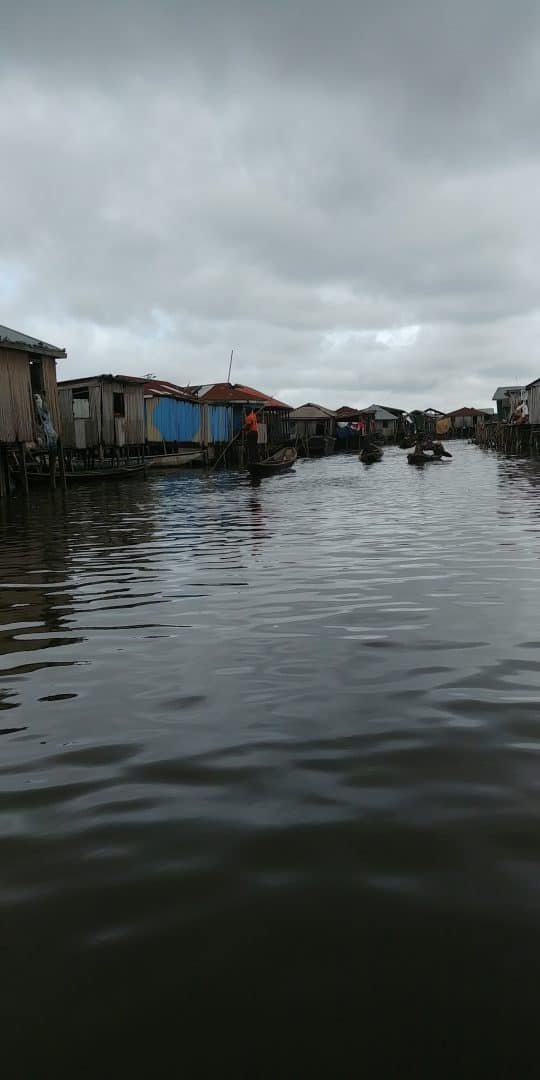
Although the village is completely made up of stilt houses, you can still find every building that you would need – restaurants, shops, schools and even hotels. Since movements are only possible through water, you’ll see that even little kids have their own tiny canoes.
On your way to Ganvie and back, you will get to see many fishermen in action, laying down their large fishing nets. Its economy is based primarily on fishing with a growing tourism sector in recent years. Nevertheless, most of them would still pause their hard work to smile and wave at you.
Another interesting sight you will find is the floating market, where traders within the village load their canoes full of goods and gather at a fixed spot, which is known as the marketplace.
Travel West Africa: Why Togo and Benin?
There are many reasons for you to go backpacking to Togo and Benin. The foremost among them are as follows.
| Affordable
Both Togo and Benin are extremely affordable for travelers. Whether we’re talking about food, commute, stay or shopping, you won’t have to burn holes in your pockets. |
| Less crowded
The first reason to go backpacking to Togo and Benin is that the region receives less visitors than the rest of West Africa. You get to explore more and at absolute peace. |
| Fascinating traditions
Right from some uncanny festivals to practicing Voodoo magic, backpacking to Togo and Benin will let you witness traditions that can’t be found elsewhere. You can even learn Voodoo if you want. |
| Warm Hearted people
Backpacking to Togo and Benin can have its own shared of problems but people aren’t one of them. Folks in this part of the world are warm hearted and will welcome you with open arms. |
| Sense of Community
An inspiring aspect that you will discover while backpacking to Togo and Benin is the sense of community that prevails throughout. There’s a degree of wellbeing even amidst dire poverty. This ensures that you never get into trouble in both of these countries. |
| Art work
The local artisans know their craft well and come up with unique designs on paper, wood and cloth. When you’re backpacking to Togo and Benin, be sure to buy a few wooden souvenirs and distribute among friends back home. |
If you’re still not convinced to take the leap and visit these West African countries, I’d be a little surprised.

This is me at the “Route des Enclaves”, a scenic 3.5 km long beach side trail with a dark history. There was no point during my trip to Togo and Benin that I wasn’t left awestruck. It let me step closer to the inception of Voodooism, and the miseries of the slaves.
Is There a Flip-side to Visiting Togo and Benin?
Unfortunately, yes. Since not many people go backpacking to Togo and Benin, the region isn’t very developed. Accommodation and transport options are as limited as they can get. Also, there are fewer places to explore than in nearby countries like Ghana.
Having said that, do not judge the region on the basis of these factors alone. Do visit these two nations and understand the land, its people and culture. Togo and Benin might not be mainstream travel destinations, but things are surely beginning to change.
Forget about all those people who say it’s unsafe traveling to this part of the world; that you’re only going to be stressed throughout your trip.
If you’re planning to travel to West Africa but are having second thoughts, read and understand the following line – “The least visited places often help us experience the most meaningful trips.”
Happy wayfaring.

